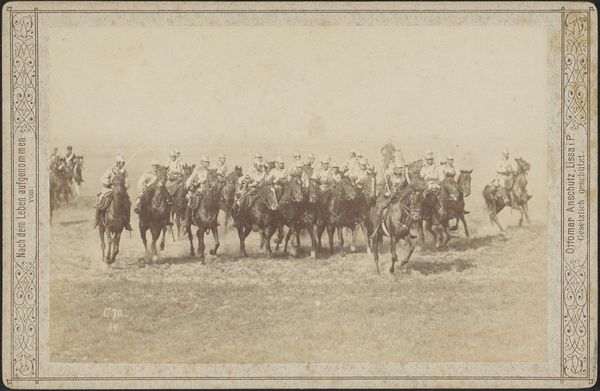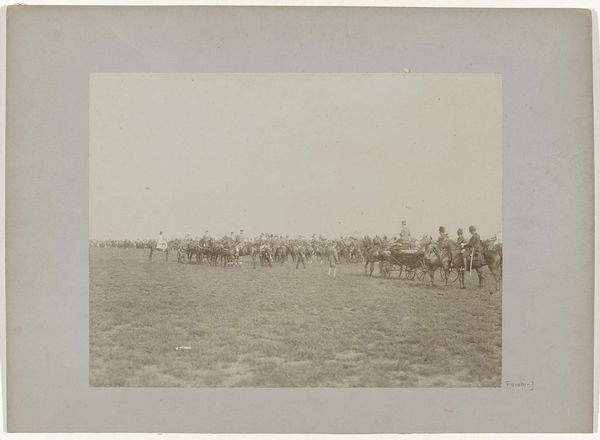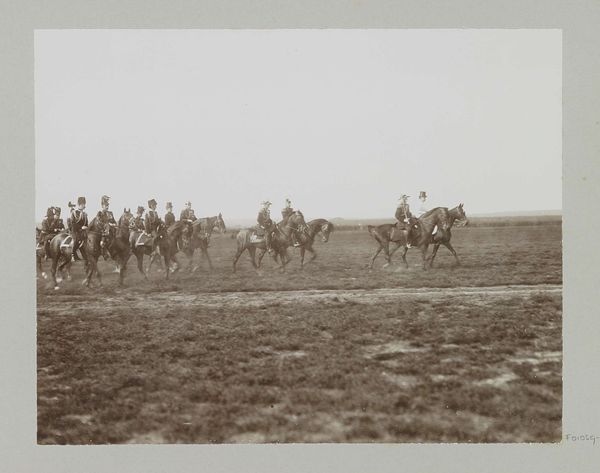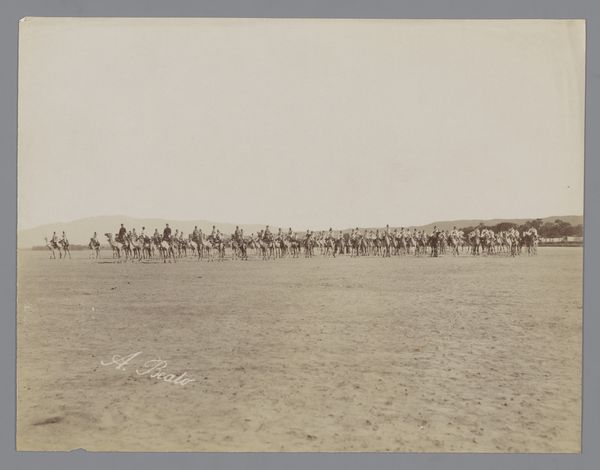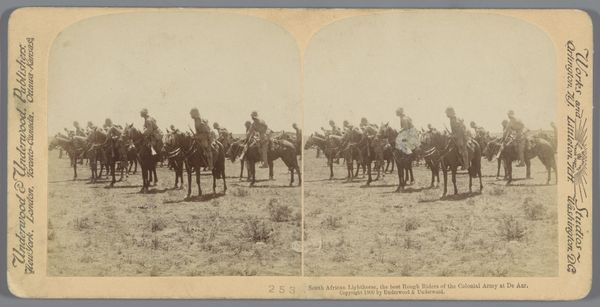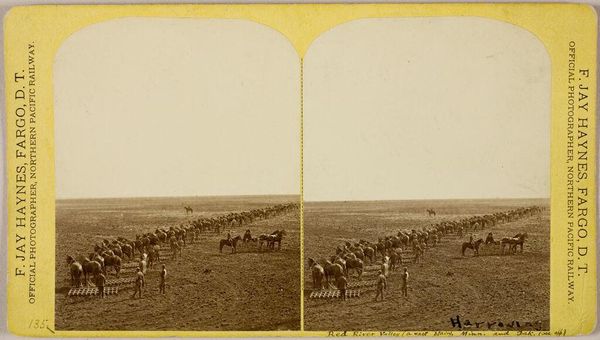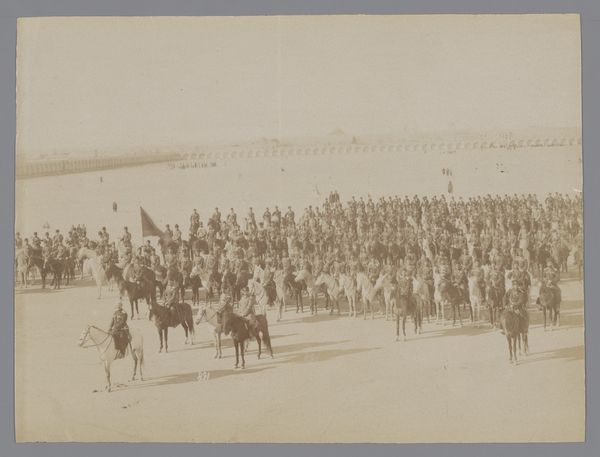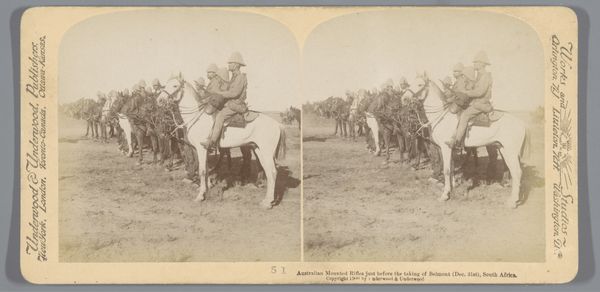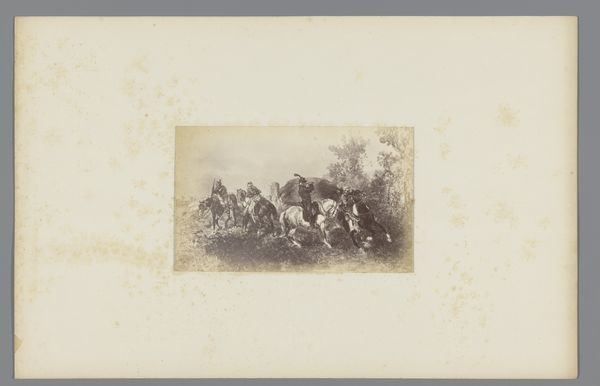
photography, gelatin-silver-print
#
portrait
#
landscape
#
photography
#
gelatin-silver-print
#
realism
Dimensions: height 108 mm, width 166 mm
Copyright: Rijks Museum: Open Domain
Editor: So, this is "Cavalry on the Heath" by Ottomar Anschütz, taken in 1884, a gelatin-silver print. There's this overwhelming sense of movement, like a wave of horses charging right at you. It’s so dynamic. How do you interpret this work? Curator: The repeated image of the horse carries immense symbolic weight across cultures. The horse, of course, signifies power, freedom, and even virility. But think about *how* Anschütz captures them – in unison, a uniform line. Does that uniformity add or detract from the animal's symbolic weight here? Editor: Hmmm, that's a good question. I think the uniformity changes it. Instead of individual power, it’s a collective force. More about the might of the military than the individual horse or rider. Curator: Precisely. Consider also the historical moment. The late 19th century was an age of nationalism and militarism. This image functions almost like propaganda, cementing the viewer's association of the nation with potent, unified military strength. What feelings are conjured, seeing this visual vocabulary, almost like an alphabet, employed time and time again through history? Editor: It's a little unsettling to realize how those symbols are consistently reused to create specific emotions and responses. I definitely see that propaganda element now. Curator: Yes. This photograph is a powerful reminder of how visual symbols can be strategically deployed. Every element carries cultural significance. How has it shaped your understanding? Editor: I think I'll definitely be paying closer attention to how images are used to convey messages and reinforce cultural ideas, especially related to power. Curator: Indeed. By being aware of these symbolic structures, we gain agency in deconstructing them.
Comments
No comments
Be the first to comment and join the conversation on the ultimate creative platform.
